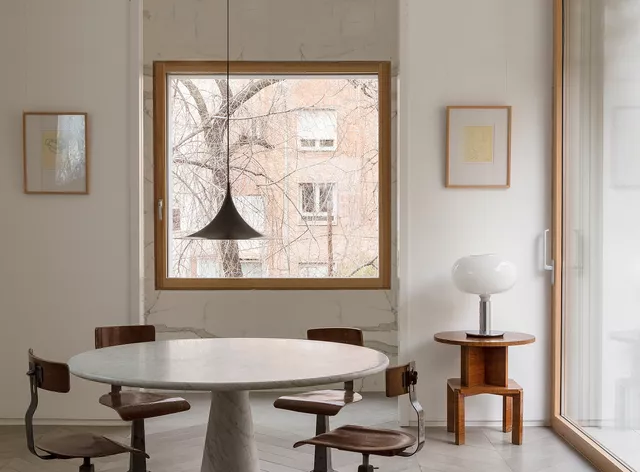- Typology
- Residential
- Location
- MADRID
- Date
- 2018
- Size
- 500 SQM
- Status
- BUILT
Info
The construction of a semi-detached single-family home in the consolidated, protected urban environment of the El Viso area is resolved based on four concepts:
- Integrating the new single-family townhouse into its setting, striving to blend the new building with its extension in with the neighbouring buildings through a thorough study of its volume and the scale of its openings.
- Accentuating the natural green space outside over the built interior area. Minimising the ground floor extension and incorporating the outdoor spaces into the home on each floor by means of large windows and the successive terraces the building produces through the staggering of its storeys.
- Optimisation of the resulting space, without generating drab circulation areas, enabling the design of open spaces.
- The incorporation of passive and active design strategies to optimise the new building’s energy performance. This includes incorporating water on the roof to exploit its thermal inertia and the installation of geothermal wells in the home.
Spatially, a lightweight suspended structure colonises the central space in the home like a tree, characterising the large three-storey space that resolves the house’s vertical communication, acting as a true backbone to the setting, binding spatial, functional and environmental aspects, optimising the interior space in the home. The freshness of the irrigation and moisture from the garden are exploited by introducing them into the diaphanous interior space of the home through the large windows, using the Venturi effect generated by the three-storey central space ventilated at the top by two skylights, that allows the wind to flow through the designed water hanging lamps to dissipate the heat and cool the house naturally in the hot months. The space and the selected materials filter the natural energy present in the site, stores it and redistributes it to provide a thermal indoor ambient and a biological outdoor environment.
Inclusion of geothermal energy and the implementation of numerous passive strategies in the very structure of the home to make use of natural ventilation and the thermal inertia of the materials themselves contribute to moderating the temperatures in the interior space and optimising the house’s energy performance throughout the year. The interior spaces are covered with some freedom in materials with smooth finishes, with expansive wood-trimmed windows, framing views and creating a variety of domestic nooks that incorporate pieces of furniture contributing the necessary warmth to the domestic layout as a counterpoint to the bare, clean spatial nature of the design.



















